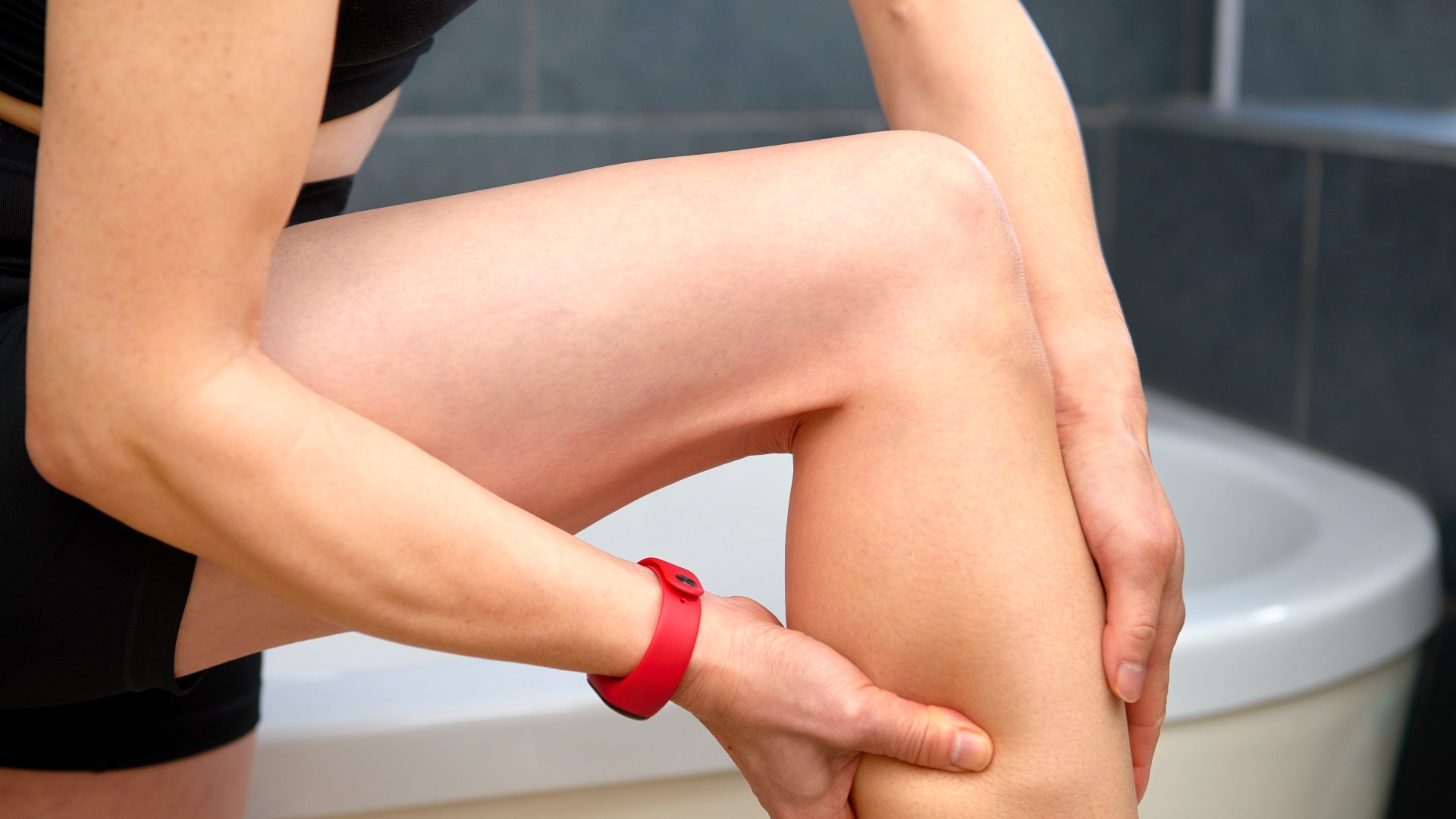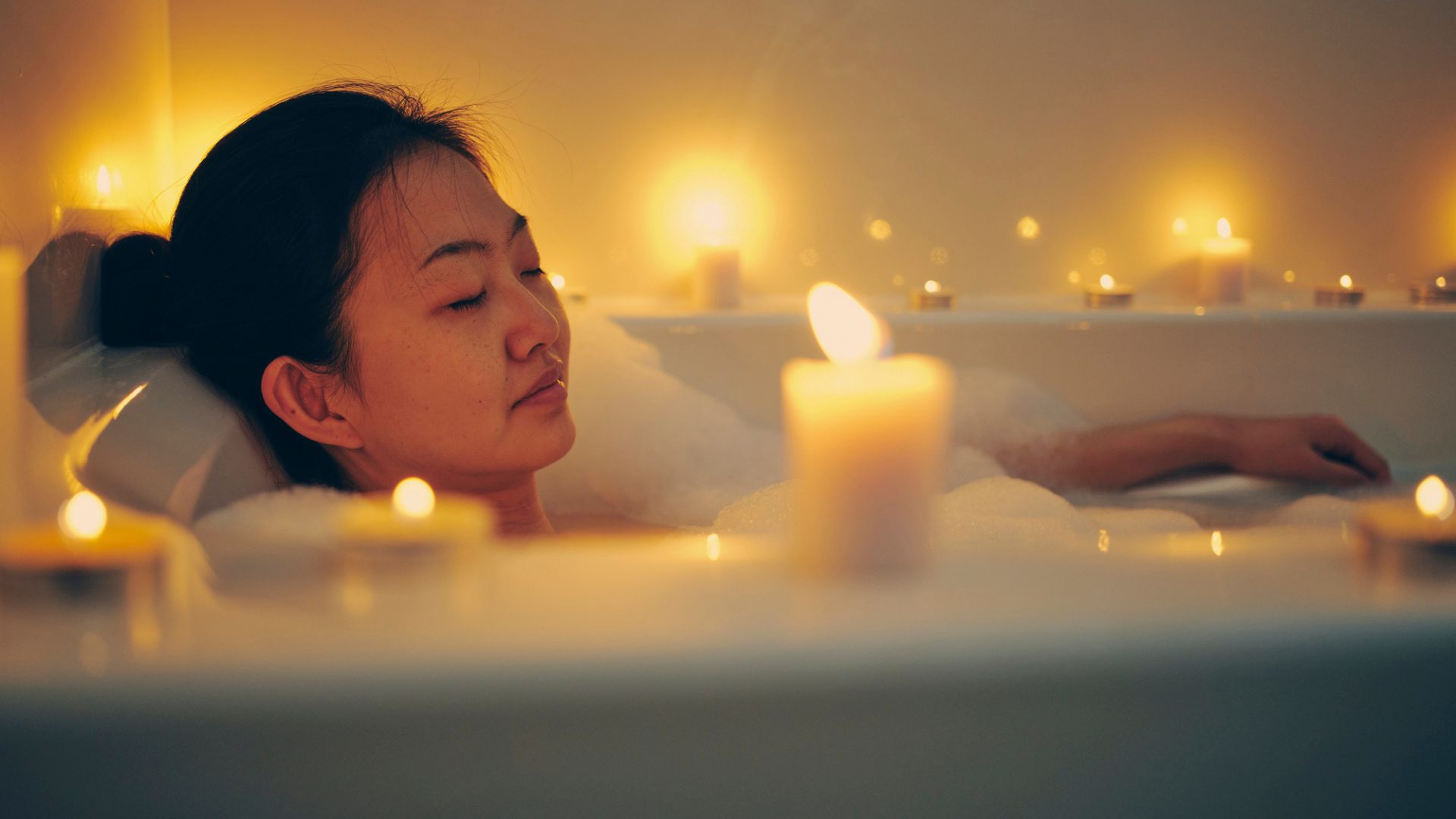How to stop restless legs immediately for a good night's sleep, according to doctors
Sleep experts reveal the four ways to stop restless legs immediately

If your legs move constantly, paired with other sensations such as aching and tingling, you may be experiencing restless legs syndrome (RLS).
The syndrome can feel uncomfortable or annoying at any time, but particularly at night when you’re trying to wind down and fall asleep. If you're tossing and turning at night, instead of snoozing, you may be wondering whether there are any ways to stop restless legs immediately, and why it happens in the first place.
We’ve spoken to two sleep experts, plus a massage therapist to dive deeper into why RLS occurs. The article also looks at simple ways to stop restless legs immediately, such as relaxing in a warm bath, and why avoiding triggers can not only stop the symptoms but also help you get a better night's sleep.
What is restless legs syndrome and how does it impact sleep?
Restless legs syndrome (RLS) - a condition that affects around 10 per cent of the US population - is thought to be hereditary but has also been linked to diseases such as kidney problems or diabetes. The main symptom of the syndrome is an uncontrollable urge to move your legs, often paired with weird sensations like tingling or aching.
Dr. William Lu, a sleep medicine physician, explains that RLS is a neurological condition that causes “overwhelming discomfort and urge to move your legs, which typically worsens when resting and at night, causing significant sleep disruption. People typically try to move their legs to find relief, making falling or staying asleep difficult.”
However, the sleep doctor, who is also the health medical director at Dreem goes on to add that RLS is one of the “most underdiagnosed issues in sleep medicine as many people chalk this up to ‘restlessness’ or a habit.”
How to stop restless legs immediately
If the condition is already affecting your ability to get to sleep or even stay asleep you may be wondering how to stop restless legs immediately - here are some steps to take:
1. Massage your legs
We all feel more relaxed after a massage, so putting slight pressure on the area can give you some temporary relief. “A gentle massage can improve blood circulation, relax your muscles, and temporarily interrupt those uncomfortable sensations”, explains Dr. Shelby Harris, director of sleep health at Sleepopolis.
If this doesn’t help or wears off too quickly, it could be a good idea to book in for a professional massage. Larisa Chavez, a massage therapist and holistic practitioner, adds that a full-body massage can help address pain in the nervous system.
Get instant access to breaking news, the hottest reviews, great deals and helpful tips.
“I combine gentle massage of the lower back, hips, and inner thighs - areas innervated through the sacroiliac joint (low back). The nerves that go down to the legs carrying the uncomfortable ‘signals’ pass through the hip joint here, so slow soothing techniques in these areas can be highly impactful.”

2. Light exercise before bed
“Exercise may help manage RLS, but timing matters. Intense workouts close to bedtime might make symptoms worse,” explains Harris, with studies showing that light exercise, such as walking, swimming or stretching can ‘help improve circulation and reduce RLS symptoms in the evening.’
You don’t have to sign up for a fancy gym though, as some simple stretches or yoga movements at home, which can be found online, could help you feel more comfortable at night.
If you want to do more intense exercise, opt to do it at lunchtime or in the morning, so your body has time to decompress.
3. Warm bath
Slipping into a warm bath, especially on a winter's evening, can feel like a self-care act - but if you have RLS it could also help your symptoms.
“Baths naturally calm the nervous system, helping to ease both mental and physical tension,” explains Chavez, while for help with sleep, she recommends adding Epsom salts for their magnesium content, which promotes muscle relaxation.
“Essential oils like lavender or chamomile are great additions too; the pleasant scents shift focus away from stress and create a peaceful sensory experience. It’s all about creating a soothing environment that allows the nervous system to relax.”

4. Keeping to a consistent bedtime
If your bedtime is constantly changing you’ll be sending your body’s internal clock confusing signs. Chavez explains that practising good sleep hygiene is vital for managing RLS, as consistent sleep schedules and bedtime rituals signal the brain to downregulate.
“Effective strategies include going to bed and waking up at the same time every day, engaging in calming activities an hour before bedtime, taking a shower, or walking at sunset. Avoiding artificial light after sunset is crucial, as melatonin production—key to sleep—is suppressed by artificial light exposure,” she explains.
How to avoid restless leg syndrome at night
Lifestyle changes can also help you to relieve symptoms of restless legs syndrome at night, such as:
1. Avoiding caffeine and alcohol
Dr Lu explains that too much caffeine and alcohol can dysregulate “dopamine neurotransmitters in the brain which is the driving force behind why restless leg syndrome occurs.”
Aim to stop drinking coffee by lunchtime and if your symptoms are recurring then avoid alcohol completely - even just one alcoholic drink can affect sleep patterns so can also make RLS worse.
2. Create a calming nighttime routine

If you’ve had a stressful day, pop on a meditation app, light some candles and put your phone down - even if it's just a 10 minute nighttime routine before bedtime. Stress or anxiety can make your symptoms worse, with Dr Harris adding that ‘focussing on stress management and maintaining consistent sleep patterns,’ can help to relieve your symptoms
However, the sleep expert adds if RLS is disrupting your sleep regularly, talk to “your doctor about potential treatments, as effective medications can also help."
3. Take iron supplements
Research shows that an iron deficiency can be one of the causes of restless leg syndrome. This is because a lack of iron in the blood can cause your dopamine levels to drop, resulting in the symptoms of RLS.
Consult a doctor, if you think you have low iron levels, and they can test your blood and recommend how much iron you need to stop the RLS symptoms.

Sarah is a freelance writer who has been published across titles including Woman & Home, The Independent, and the BBC. Sarah covers a variety of subjects, including health and wellness. For Tom's Guide Sarah often writes about sleep health and hygiene, and interviews leading sleep experts about common issues such as insomnia and sleep deprivation.
